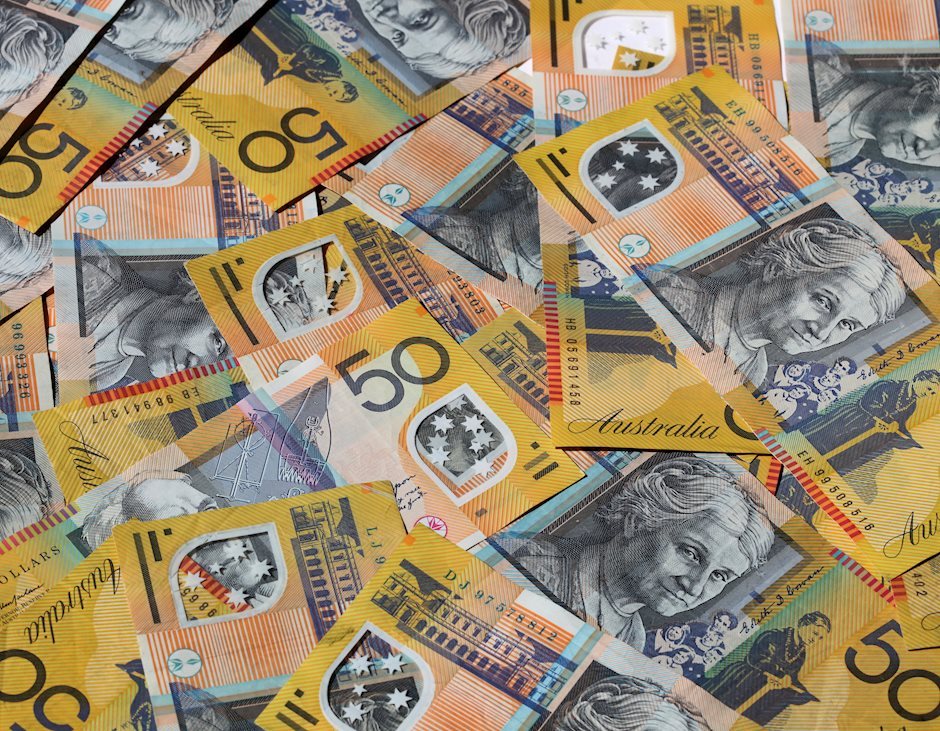AUD/USD consolidates near 0.6750 as investors await US Inflation
- AUD/USD trades sideways with US Inflation in focus.
- Fed Powell cited concerns over easing US labor market strength.
- The RBA is expected to leave interest rates unchanged for the entire year.

The AUD/USD pair stays in a tight range near 0.6750 in Wednesday’s European session. The Aussie asset turns sideways as investors have sidelined with focus on the United States (US) Consumer Price Index (CPI) data for June, which will be published on Thursday.
The inflation data will provide cues about when the Federal Reserve (Fed) will start reducing interest rates. Meanwhile, market sentiment remains firm as investors see the Fed reducing interest rates in September meeting a done deal due to easing US labor market conditions. S&P 500 futures have posted some gains in European trading hours. The US Dollar Index (DXY), which tracks the Greenback’s value against six major currencies, hovers near 105.00.
On Tuesday, Fed Chair Jerome Powell said in the semi-annual Congressional testimony on Tuesday that escalated inflation has not remained the only risk to Fed’s dual mandate. Powell cautioned about easing US labor market strength as the US is no longer an overheated economy.
Latest US Nonfarm Payrolls data also showed a slowing trend in job demand, a rise in the Unemployment Rate to its highest in more than two years and expected slowdown in Average Hourly Earnings, a wage growth measure.
On the Aussie front, growing speculation that the Reserve Bank of Australia (RBA) will be the last to join the global rate-cutting cycle has kept the Australian Dollar (AUD) on the front foot. The RBA is expected to keep its Official Cash Rate (OCR) at its current levels for the entire year due to reversed disinflation process, prompted by strong consumer spendings.
Australian Dollar FAQs
One of the most significant factors for the Australian Dollar (AUD) is the level of interest rates set by the Reserve Bank of Australia (RBA). Because Australia is a resource-rich country another key driver is the price of its biggest export, Iron Ore. The health of the Chinese economy, its largest trading partner, is a factor, as well as inflation in Australia, its growth rate and Trade Balance. Market sentiment – whether investors are taking on more risky assets (risk-on) or seeking safe-havens (risk-off) – is also a factor, with risk-on positive for AUD.
The Reserve Bank of Australia (RBA) influences the Australian Dollar (AUD) by setting the level of interest rates that Australian banks can lend to each other. This influences the level of interest rates in the economy as a whole. The main goal of the RBA is to maintain a stable inflation rate of 2-3% by adjusting interest rates up or down. Relatively high interest rates compared to other major central banks support the AUD, and the opposite for relatively low. The RBA can also use quantitative easing and tightening to influence credit conditions, with the former AUD-negative and the latter AUD-positive.
China is Australia’s largest trading partner so the health of the Chinese economy is a major influence on the value of the Australian Dollar (AUD). When the Chinese economy is doing well it purchases more raw materials, goods and services from Australia, lifting demand for the AUD, and pushing up its value. The opposite is the case when the Chinese economy is not growing as fast as expected. Positive or negative surprises in Chinese growth data, therefore, often have a direct impact on the Australian Dollar and its pairs.
Iron Ore is Australia’s largest export, accounting for $118 billion a year according to data from 2021, with China as its primary destination. The price of Iron Ore, therefore, can be a driver of the Australian Dollar. Generally, if the price of Iron Ore rises, AUD also goes up, as aggregate demand for the currency increases. The opposite is the case if the price of Iron Ore falls. Higher Iron Ore prices also tend to result in a greater likelihood of a positive Trade Balance for Australia, which is also positive of the AUD.
The Trade Balance, which is the difference between what a country earns from its exports versus what it pays for its imports, is another factor that can influence the value of the Australian Dollar. If Australia produces highly sought after exports, then its currency will gain in value purely from the surplus demand created from foreign buyers seeking to purchase its exports versus what it spends to purchase imports. Therefore, a positive net Trade Balance strengthens the AUD, with the opposite effect if the Trade Balance is negative.
Author

Sagar Dua
FXStreet
Sagar Dua is associated with the financial markets from his college days. Along with pursuing post-graduation in Commerce in 2014, he started his markets training with chart analysis.

















